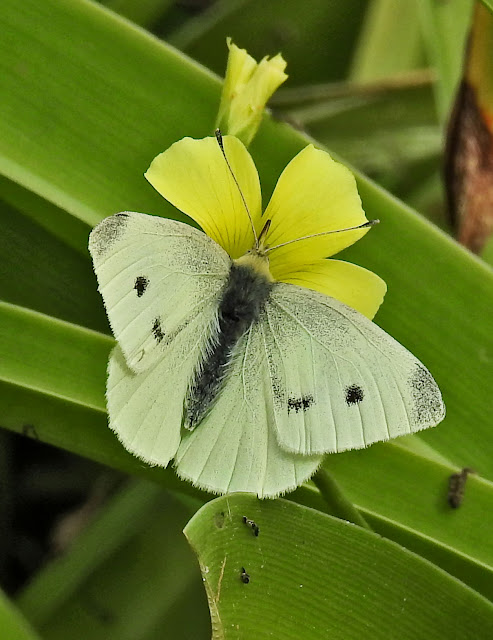This Blog contains Wildlife, Plants and Bird Photos from Walks, Safaris, Birding Trips and Vacations. Most of the pictures have been taken with my Nikon P900 and P950X cameras. Just click on any image for a larger picture. On the right column under the Blog Archive are the entries by date. Below that under Animal categories all the diffent species of Animals, Birds, Insects and Plants contained in the website are listed. Clicking on any entry will show all the entries for that species.
TOTAL PAGEVIEWS
TRANSLATE
Sunday, 7 February 2016
12-12-2015 BAGAN, MYANMAR - PIED BUSH CHAT (MALE) (Saxicola caprata)
6-2-2016 GANDIA, VALENCIA - CABBAGE WHITE BUTTERFLY (Pieris rapae)
Saturday, 6 February 2016
6-2-2016 GANDIA, VALENCIA - EUROPEAN SERIN (Serinus serinus)
6-2-2016 GANDIA, VALENCIA - COMMON CHAFFINCH (FEMALE) (Fringilla coelebs)
6-2-2016 GANDIA, VALENCIA - EURASIAN BLACKBIRD (MALE) (Turdus merula)
5-2-2016 VILLALONGA RESERVOIR, VALENCIA - GREEN SANDPIPER (Tringa ochropus)
5-2-2016 VILLALONGA RESERVOIR, VALENCIA - COMMON KINGFISHER (MALE) (Alcedo atthis
As with all kingfishers, the Common kingfisher is very territorial, mainly because each day it has to eat about 60% of its body weight. They even defend their territory against their mates and offspring. Individuals are solitary for most of the year, roosting in heavy cover beside their favorite hunting spot. When another kingfisher comes into its territory, the birds will both sit on a perch at some distance from one another and perform territorial displays, usually the display of beaks and plumage. Fights occasionally occur, one bird grabbing the other one’s beak and trying to hold their opponent under the water. Their flight is very fast, causing their wings to seem like a blue haze.
5-2-2016 VILLALONGA RESERVOIR, VALENCIA - EUROPEAN MOORHEN (FEMALE) (Gallinula chloropus)
5-2-2016 VILLALONGA RESERVOIR, VALENCIA - CETTI'S WARBLER (Cettia cetti)
5-2-2016 VILLALONGA RESERVOIR, VALENCIA - MALLARD HYBRID (FEMALE) (Anas platyrhynchos)
Tuesday, 2 February 2016
2-2-2016 VILLALONGA RESERVOIR - SPOTLESS STARLING (Sturnus unicolor)
2-2-2016 VILLALONGA RESERVOIR, VALENCIA - EUROPEAN ROBIN (Erithacus rubecula)
2-2-2016 MONTE CORONA, VALENCIA - WHITE WAGTAIL (Motacilla alba)
1-2-2016 LES FOIS , VALENCIA - WALL BROWN BUTTERFLY (Lasiommata megera)
Sunday, 31 January 2016
31-1-2016 HONG KONG, CHINA - MRS GOULD'S SUNBIRD (Aethopyga gouldiae)
Mrs. Gould's sunbird (Aethopyga gouldiae) is a sunbird species native to forests and shrublands from the southern foothills of the Himalayas to Southeast Asia.
Mrs. Gould's sunbird is widely distributed in Bangladesh, Bhutan, Laos, Myanmar, Nepal, Thailand, India, Vietnam and Southern China. It is found in the evergreen broad-leaved forest, monsoon forest and deciduous broad-leaved forest at 1000-3500 m above sea-level. It is also occasionally found in orchards and bamboo forest within its range. There is a non-breeding population in Hong Kong.
%20(Saxicola%20caprata)%2010.jpg)
%20(Saxicola%20caprata)%2011.jpg)
%20(Saxicola%20caprata)%2012.jpg)




%20(Fringilla%20coelebs)%2020.jpg)
%20(Fringilla%20coelebs)%2021.jpg)
%20(Turdus%20merula)%2020.jpg)
%2020.jpg)













%2020.jpg)
%20(Anas%20platyrhynchos)%2021.jpg)
%20(Anas%20platyrhynchos)%2022.jpg)


%2020.jpg)









%20(Passer%20montanus)%2020.jpg)


